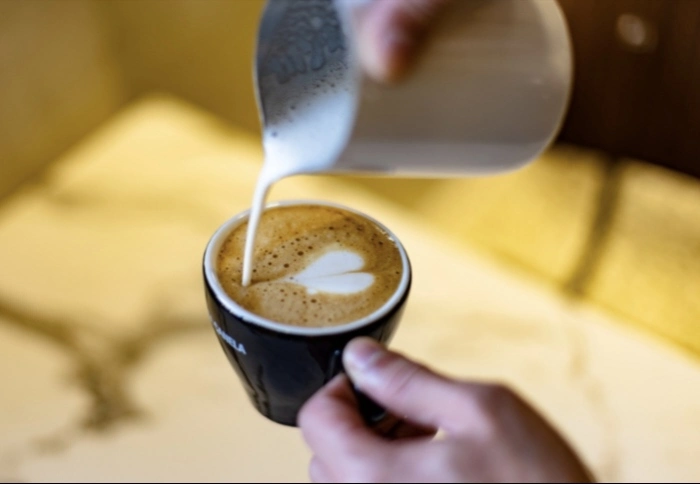Espresso is more than just a strong coffee. It’s a concentrated shot of flavor, aroma, and texture. The roast level of the beans plays a crucial role in shaping the final cup. But what roast is truly best for espresso? The answer isn’t straightforward—different roast levels bring out different qualities in espresso. This article explores the ideal roast for espresso, diving into the science, tradition, and modern trends shaping espresso roasting today.
Understanding Coffee Roast Levels
Before deciding on the best roast for espresso, it’s essential to understand the basic roast levels. Coffee beans go through several stages as they roast, developing different flavors, aromas, and body characteristics.
Light Roast
Light roast coffee is roasted for the shortest time, stopping just after the first crack. The beans retain much of their original acidity and fruity, floral notes. Light roasts are bright and complex but lack the deep, caramelized sweetness often associated with espresso.
Medium Roast
Medium roast strikes a balance between acidity and body. The beans reach a point between the first and second crack, developing more sweetness and a fuller mouthfeel. Medium roasts are versatile and work well for many brewing methods, including espresso.
Dark Roast
Dark roast coffee is taken past the second crack, resulting in shiny, oily beans with bold, smoky flavors. The acidity fades, replaced by deep chocolate, caramel, and spice notes. Traditional espresso often uses dark roasts, but modern preferences are shifting.
Traditional Espresso Roast: The Dark Side
Historically, espresso has been associated with dark roasts. This tradition comes from Italy, where espresso was born. Italian roasters favored dark roasts for several reasons.
Why Dark Roast Dominated Espresso
Dark roasts produce a thick, syrupy body that stands up to the high-pressure extraction of espresso. The bold, low-acid flavors cut through milk well, making them ideal for cappuccinos and lattes. Additionally, dark roasts are more forgiving during extraction, reducing the risk of sour or bitter shots.
Common Dark Roast Profiles for Espresso
Italian roasts, such as Napoli or Espresso Roast, are nearly black with visible oils. These roasts emphasize bittersweet chocolate, toasted nuts, and a heavy mouthfeel. French roast, another dark option, leans smokier and more intense.
The Rise of Medium Roast Espresso
While dark roasts were once the standard, specialty coffee has shifted preferences toward medium roasts. Third-wave coffee shops now favor lighter, more nuanced profiles for espresso.
Benefits of Medium Roast for Espresso
Medium roasts retain more origin character, allowing fruity and floral notes to shine. They offer a balanced acidity and sweetness, creating a more complex and vibrant shot. Medium roasts also highlight the skill of the barista, as they require precise extraction to avoid sourness or underdevelopment.
Popular Medium Roast Espresso Blends
Many specialty roasters use blends with a mix of Central American and African beans, roasted to a medium level. These espressos often feature notes of caramel, red fruit, and mild spices, appealing to those who enjoy a cleaner, brighter espresso.
Light Roast Espresso: A Modern Experiment
Light roast espresso is still a niche choice but gaining popularity among adventurous coffee lovers. It challenges the traditional idea of what espresso should be.
Characteristics of Light Roast Espresso
Light roasts in espresso highlight high acidity, floral aromas, and tea-like clarity. They can be intensely fruity, with flavors resembling berries or citrus. However, light roast espresso demands perfect grinding and extraction to avoid a sour or weak shot.
Who Should Try Light Roast Espresso?
This style suits those who enjoy pour-over or filter coffee but want a more concentrated experience. It’s less suited for milk drinks, as the delicate flavors can get lost.
Single-Origin vs. Blends: Does Roast Level Matter?
Another factor in choosing an espresso roast is whether to use single-origin beans or blends. Each has different roast considerations.
Single-Origin Espresso Roasting
Single-origin espresso highlights one coffee’s unique traits. Lighter roasts preserve terroir, while medium roasts enhance sweetness without overpowering origin notes. Dark roasts can mask delicate flavors, making them less common for single-origin espresso.
Espresso Blends & Roast Profiles
Blends combine beans for balance. Dark roast blends ensure consistency, while medium roast blends offer complexity. Many roasters tailor blends specifically for espresso, adjusting roast levels to achieve the desired flavor profile.
The Role of Roast Development in Espresso
Roast development—how evenly and thoroughly the beans are roasted—affects espresso quality more than just light, medium, or dark labels.
Underdeveloped Roasts
Underdeveloped beans taste grassy or sour, even in dark roasts. Proper development ensures sugars caramelize fully, creating sweetness.
Overdeveloped Roasts
Overroasted beans lose origin character, tasting ashy or burnt. Even dark roasts need careful control to avoid bitterness.
How to Choose the Best Roast for Your Espresso
The “best” roast depends on personal taste, brewing method, and coffee quality. Here’s how to decide.
For Classic, Bold Espresso
Choose a dark roast with notes of chocolate and nuts. Italian-style roasts work well, especially with milk.
For Balanced, Versatile Shots
A medium roast offers sweetness and acidity, great for both straight shots and milk drinks.
For Bright, Fruity Espresso
Try a light or medium-light roast with African or Central American beans. Best enjoyed as straight espresso.
Conclusion
The best roast for espresso isn’t a one-size-fits-all answer. Dark roasts deliver traditional richness, medium roasts bring balance, and light roasts offer exciting acidity. The key is finding a roast that suits your taste and brewing style. Experiment with different levels to discover your perfect espresso.
Related topics:
Where to Buy Gaggia Espresso Machines: A Complete Guide
How Long to Pull a Double Shot of Espresso
Can You Make Cold Brew with Espresso Beans?


